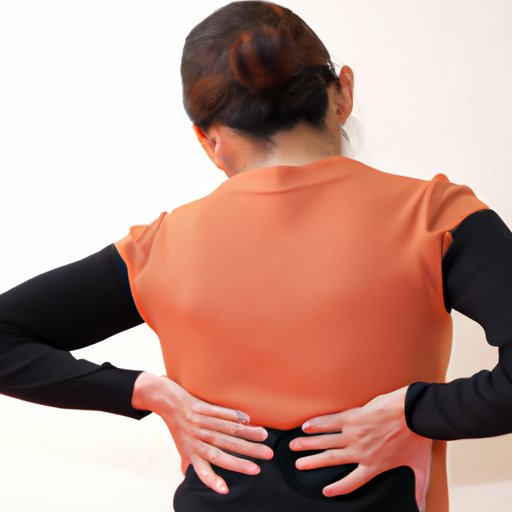
Relieving Upper Back Pain: Tips and Techniques
If you’ve ever experienced upper back pain, you know how uncomfortable and disruptive it can be to your daily routine. Whether it’s the result of poor posture, overuse, or an injury, upper back pain can prevent you from enjoying your favorite activities and completing tasks as efficiently as usual. Fortunately, there are effective ways to alleviate this type of pain, many of which you can do on your own without any special equipment or training.
Stretching
One of the best ways to relieve upper back pain is by stretching. Stretching helps to ease tension and tightness in the muscles, promoting better circulation and reducing inflammation. There are several upper back stretches you can do, and they’re easy to incorporate into your daily routine.
Some examples of upper back stretches include:
- Shoulder blade squeezes: Stand with your arms at your sides and draw your shoulder blades together behind you. Hold for a few seconds, then release. Repeat for several reps.
- Neck rolls: Gently roll your head from side-to-side, allowing your ear to drop toward your shoulder. Hold for a few seconds when you feel a stretch, then return to center and repeat on the other side.
- Chest stretches: Use a doorway or wall to stretch your chest muscles. Place your hands on either side of the doorway and step through gently until you feel a stretch in your chest and shoulders.
Tips for Proper Form and Technique
When you’re stretching, it’s important to maintain proper form and technique. This can help to reduce the risk of further injury and ensure that you’re getting the most benefit from each stretch. Here are a few tips to keep in mind:
- Focus on your breathing: Deep, slow breathing can help you to relax and get a better stretch.
- Pay attention to your body: If a stretch feels painful or uncomfortable, back off and try a gentler version or skip it altogether.
- Hold each stretch for at least 10-15 seconds: This allows your muscles to fully relax and improves flexibility over time.
Posture Improvement
Another way to alleviate upper back pain is by improving your posture. Poor posture can contribute to muscle tension and pain, especially if you sit or stand for extended periods of time. Here are some tips for maintaining good posture throughout the day:
- Set up an ergonomic workspace: Make sure your computer, desk, chair, and other equipment are properly adjusted for your height and comfort level.
- Adjust your seating and standing position: Try to vary your positions throughout the day, and avoid slouching or hunching forward.
- Do posture-improving exercises: Strengthening the muscles that support your upper back can help to improve your posture. Wall slides, cat-cow stretches, and plank variations are all good examples
Massage
Massage is another effective way to relieve pain and tension in the upper back. Massage can help to loosen tight muscles, increase blood flow, and promote overall relaxation. While professional massage therapy is an excellent option, there are also techniques you can do at home, such as self-massage with a tennis ball or foam roller, or partner-assisted massage. Here are a few tips to keep in mind:
- Use a firm, but gentle touch: Don’t press too hard or use rapid, jerky motions that can cause further pain or injury.
- Focus on the areas that feel particularly tense or sore: Spend extra time massaging these areas, using circular motions and incorporating gentle stretches as you go.
- Do your research before seeing a professional: Look for massage therapists who specialize in treating upper back pain.
Heat Therapy
Heat therapy is another easy and effective way to ease upper back pain. Heat can help to increase blood flow to the muscles and reduce muscle stiffness and tension. There are many ways to incorporate heat therapy into your daily routine, such as using heating pads, taking warm showers, or using hot towel compresses. Here are a few tips to keep in mind:
- Avoid using heat therapy on swollen or inflamed areas: If you’re experiencing acute pain or an injury, it’s usually best to use cold therapy instead.
- Don’t overdo it: Limit heat therapy sessions to 20-30 minutes at a time, and allow your body to cool down in between sessions.
- Be cautious when using hot water or heating pads: Make sure you don’t burn yourself, and test the temperature of the water or pad before using it on your skin.
Exercise
Exercise is yet another effective way to reduce upper back pain. By strengthening the muscles that support your upper back, you can improve your posture and reduce muscle tension over time. Some examples of upper back exercises include rows, pull-ups, and lat pulldowns. Additionally, exercises like yoga, Pilates, and swimming can also help to relieve upper back pain.
Conclusion
Upper back pain can be a frustrating and debilitating condition, but it doesn’t have to be. By incorporating stretching, posture improvement, massage, heat therapy, and exercise into your routine, you can effectively reduce pain and tension and promote overall relaxation. Remember to start slowly and carefully with any new technique, and don’t hesitate to seek professional medical help if your pain persists. Relief is achievable with a little time, patience, and effort.





